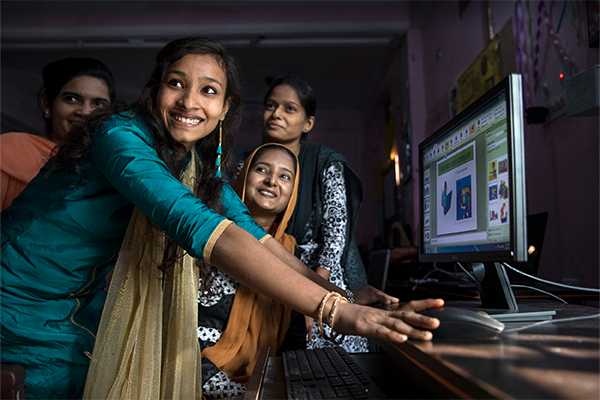Key messages
- Cervical cancer ranks fourth among all cancers and is currently the leading cause of cancer deaths in women in 38 countries – all of them LMICs. Even in high-income countries, cervical cancer disproportionately impacts minorities and marginalised women. Cervical cancer is unequivocally an equity and social, gender and health justice issue.
- Globally, there were around 660,000 new cases of cervical cancer in 2022. In the same year, about 94% of the 350,000 deaths caused by cervical cancer occurred in low- and middle-income countries. Nearly 20% of all cases and 25% of resulting deaths were in India.
- Cervical cancer is one of the most preventable and treatable forms of cancer, as long as it’s detected early and managed effectively. The vaccine for human papilloma virus (HPV) – the cause of nearly all cervical cancer - is essential. We have the vaccines, technologies, treatment – this is the one type of cancer that we can realistically eliminate.
- India produces an effective HPV vaccine – but there are barriers to widespread uptake. A partnership between Cancer Research UK and the American Cancer Society is helping to overcome them by training physicians and raising public awareness.
Low awareness and misinformation are costing lives
Cervical cancer is the second most common cancer among women and girls across India. The country accounts for 20% of the global burden of cervical cancer, with a significant increase projected over the next 20 years if action is not taken.
But cervical cancer is preventable, and there are opportunities to stop the rise – in fact, this form of cancer can realistically be eliminated in India and around the world. Infection with the human papilloma virus (HPV) is linked to 99% of cases of cervical cancer, so vaccination is the most effective preventive approach when given to girls, ideally between the ages of nine and 14.
The Government of India began manufacturing its own HPV vaccine in 2022 and launched a national programme offering the vaccine free for girls in the nine to 14 age group. However, uptake has been slow. There is distrust of the vaccine among much of the public due to misinformation or lack of information. And clinicians are not confident in promoting the vaccine to parents, girls and their communities.

Partnering to prevent cervical cancer
A partnership between Cancer Research UK and the American Cancer Society, “Activating stakeholders to prevent cervical cancer through HPV vaccination in India”, aims to overcome these vaccination barriers. The programme is training tens of thousands of doctors across the country to promote the vaccine. Training includes practical information on dosages and provision, details of the World Health Organization’s strategy to eliminate cervical cancer, and advice on how to talk about the topic and answer common questions.
The aim is to reach over 50,000 physicians across India. After the training, doctors are asked to approach their communities in their local languages to give short presentations. Training resources have also been adapted for use by teachers and in schools, as well as by Accredited Social Health Activists - female community health workers in India who serve as a link between marginalised communities and the public health system and are essential in reaching rural communities.
The project partners with Cancer Foundation of India (CFI), the Indian Medical Association (IMA) and Medical Societies (FOGSI and IAP) for support with developing the training curriculum and the logistics of training clinicians in the country. After the training, frontline health workers are better able to understand vaccine effectiveness, target populations in need, combat misinformation, and share information on the importance of childhood vaccination. This training is a vital step to ensure the success of the national HPV vaccination programme.
The global effort to eliminate cervical cancer
Boosting public awareness and access to services are key to cervical cancer prevention and control across the life course. Vaccination is the most effective means of preventing HPV infection and the development of cervical cancer, but screening for cervical cancer should also be done every 5-10 years from the age of 30. Early detection followed by prompt quality treatment can cure cervical cancer.
All countries have made a commitment to eliminate cervical cancer as a public health problem. The WHO Global Strategy defines elimination as reducing the number of new cases annually to four or fewer per 100,000 women and sets three targets to be achieved by the year 2030 to put all countries on the pathway to elimination in the coming decades:
- 90% of girls vaccinated with the HPV vaccine by age 15.
- 70% of women screened with a high-quality test by the ages of 35 and 45.
- 90% of women with cervical cancer or pre-cancer are receiving treatment.
Elimination of cervical cancer could happen within the lifetime of today’s young girls. We have the vaccines, technologies, and treatment to achieve it – now we need investment and focus from governments, civil society and other partners to overcome the remaining barriers.



